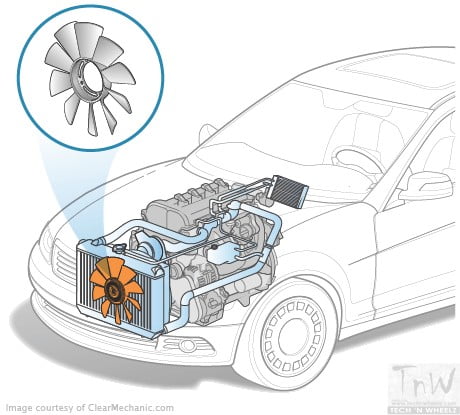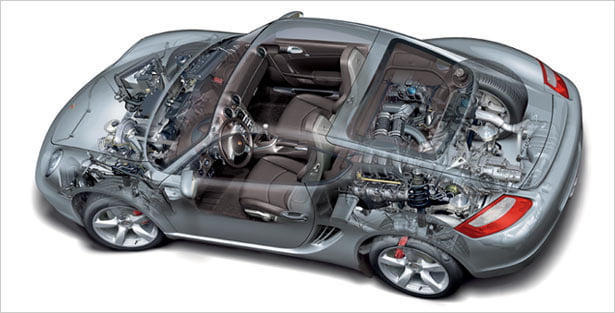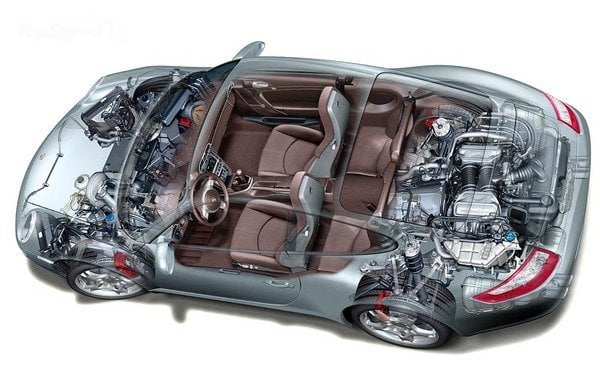In this edition of Automobile Technology Content, we have come up with a very interesting topic of the placement of engines in a car. The aim of these articles is to help you understand the technical and complex process of automobile engineering in a simple to understand language. There are plenty of automobile enthusiasts out there who want to know everything about the engines of their cars. We try to cover such topics and you can go through these under the Automobile Technology Section of the Car Blog India website. Let us start with this post for now, shall we?
Also read: How safety has evolved in the Indian automobile industry over the years after NCAP tests!
Engine Placement
Since, the beginning of automobile production, various carmakers have tried different positions for the placement of the engine to reap various benefits associated with it. Like with every other technology, various combinations of it are tried and tested and there are various applications for every technology. Similarly, there is no single answer to which is the best engine location but there are best solutions for particular requirements and applications. There are generally three types of engine placements that have been tried over the years. These include front-engine, mid-engine and rear-engine vehicles. Now, as strange as it might sound, there are advantages to having each of these. Let us discuss these in a bit of detail now.
Also read: Main Components of a 4-stroke IC Engine – Pistons, Valves, Camshafts, Turbos and more!
Front-Engine Cars
As the name suggests, front-engine cars are the ones that have the engine block at the front of the car. These are, by far, the most common configuration for all modern passenger cars. Front-engine cars are used in budget-friendly cars used in the daily commute. These engines are placed on the front axle. They strike a perfect balance between cost-effectiveness, practicality, comfort and ease of maintenance. It can also be sub-divided into a front-mid engine car when the engine is actually placed between the front wheels and the driver seat. The characteristics of such type of engine configuration are:
Also read: What are Catalytic Converters and How do they reduce emissions?
- The large weight of the engine rests on the front tyres. This means that the car will tend to understeer which is considered better than oversteer because it is easy to control.
- The front-driven wheels allow for a flat bottom because no transmission lines are needed to power the rear wheels. This frees up a ton of space for the passengers at the rear seats.
- There is sufficient space for the passengers as well as the boot compartment.
- Cooling properties are taken care of easily. By placing the radiator at the front, the overall cost is not too high because the engines are cooled by the air from the outside.
- One of the major downsides of this arrangement is the unequal weight distribution which will cause problems with handling at high speeds.
Also read: Working of Roots, Twin-Screw, Centrifugal Supercharger with Advantages of each!

Mid-Engine Cars
Mid-engine cars refer to the cars which have the engine placed behind the front seats. In such an arrangement, the cars generally have two seats only. That is why it becomes possible to place the engine right behind the driver’s seat which is almost exactly at the centre of the car. In fact, the engine is placed between the driver and the rear axle of the car enabling an almost uniform weight distribution on all four wheels. Many sports and performance cars use this type of setup to offer exquisite drivability and handling characteristics to the car. Some of the features of such arrangement are:
Also read: What is Engine Knock – Consequences and Prevention!
- Superb handling characteristics and drivability due to an almost equal weight distribution.
- Because of equal weight distribution, the traction of the car is enhanced and the braking efficiency of the car is also improved.
- There are some challenges with such kinds of arrangements also including the absence of rear seats. There is generally no possibility of having the rear seats because that is where the engine sits.
- Such engine arrangements are very expensive and are used only for performance-oriented cars.
- The ease of maintenance is not there because of high costs and complexities while the repair.
- In case of unfortunate accidents, the engine is not at the front to protect and absorb the impact which could be quite dangerous.
Also read: What are Intercoolers – Types and Functions!

Rear-Engine Cars
The engine in such cars is placed on the rear axle or the rear wheels. This is also a common arrangement for sports and performance vehicles. In such cases, the cars are also rear-wheel driven. This combination allows for the quickest accelerations because almost the entire weight of the car sits on the rear wheels, which also happen to be the driven wheels. Since these wheels have high traction, entire torque can be transmitted through them without much of a problem. This results in rapid acceleration times and a great launch of the car. The handling is also better due to better control and stability even at high speeds. Some characteristics of such arrangement are:
Also read: What is EGR (Exhaust Gas Recirculation) – Working and Advantages!
- Great handling cars with decent traction management.
- Huge benefits in the acceleration and performance aspects compared to the front-engine cars.
- The tasks of power delivery and steering are distributed to all the four wheels which don’t let only the front wheels to get overburdened like in front-engine front-wheel driven cars where all the tasks are handled by the front wheels.
- Some problems include the cost of manufacturing. Since these are relatively rare cars, they tend to be a lot more expensive and difficult to maintain and repair.
- Cooling is not easy because the engine is not in direct connection with the atmospheric cool air as in the case of front-engine cars.
- There is a problem of a proper boot compartment and the danger of frontal impact due to no engine at the front to absorb the impact.
Also read: What is Air Suspension – Uses of Soft and Stiff Springs!

Image Source: Technwheelz , Beechmontdata , Leithcars
The post Front, Mid And Rear Engine Cars – Pros And Cons! appeared first on Car Blog India.
from Car Blog India https://bit.ly/3xmo1p1
Comments
Post a Comment